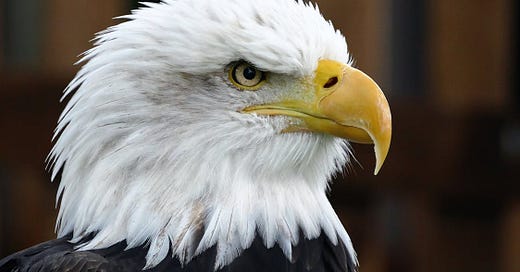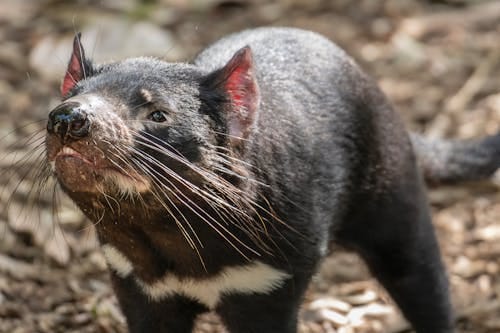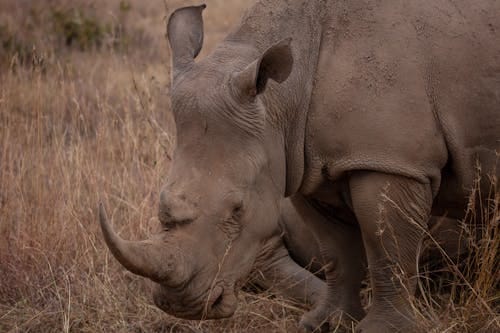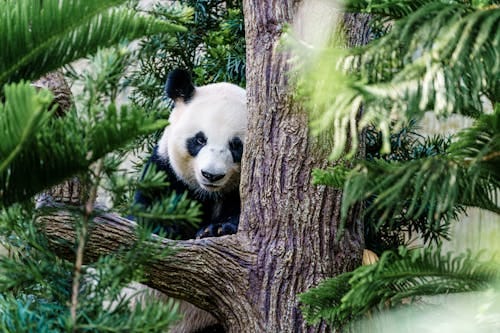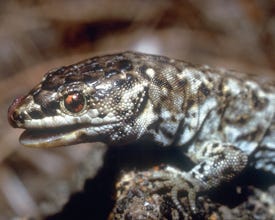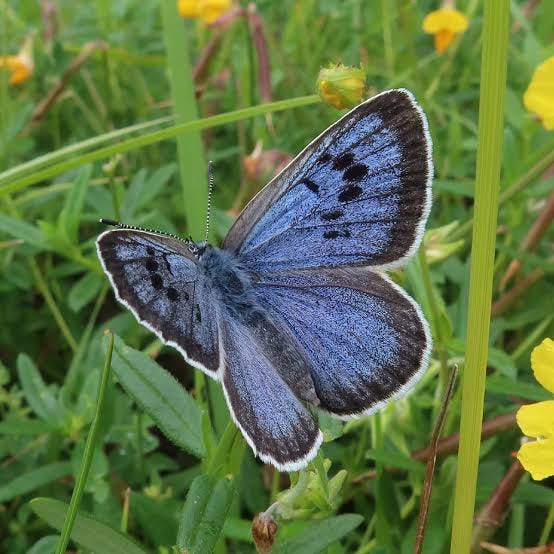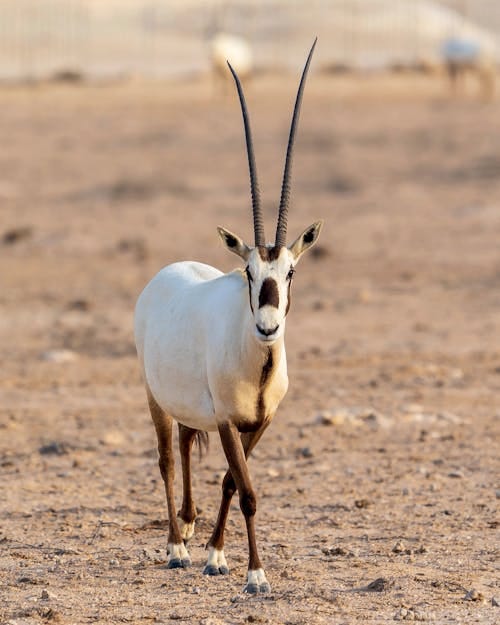Hi, it’s Ben, welcome to The Entmoot.
In this week’s issue we'll look at:
7 Wildlife Success Stories
Namibia's shocking plan to slaughter 80 elephants
Snails being sent to repopulate French Polynesia
And more…
Best links
Wildlife Conservation
A major new study finds that Wildlife conservation can work, but Chris Packham warns “time is running out” (Science focus)
Nambia plans to slaughter more than 80 elephants as protesters call it a “colossal disaster” (Independent)
Pets
Find the best Dog nutrition for your pet with Butternut box (Butternut box)
Climate Change
The National Farming Union has cast doubt over the UK farming’s net zero target (BBC News)
National debt set to triple due to climate change, says OBR (Sky News)
Zoo news
Marwell Zoo welcomes a critically endangered mountain bongo calf (Shropshire star)
Snails bred at Edinburgh Zoo are sent to repopulate French Polynesia (BBC News)
Jobs
Zoo keeper positions are available at Noah’s Ark Zoo Farm, Flamingo Land, and Chester Zoo (Wild Professionals)
Find the latest environmental, Ecology, and fundraising positions here (Environmental jobs)
Featured Article
7 Wildlife success stories
1. Bald Eagle
The bald eagle is America’s national bird and the country’s symbol. It represents strength, courage and freedom.
However, in the 1960s the population of this bird had declined to just 417 known nesting pairs across 48 states.
The cause of this near-extinction was a reduction in prey species and an eggshell-thining pesticide called DDT, which resulted in eggs being crushed under the weight of the females during nesting season.
In 1962 Rachel Carson’s book Silent Spring highlighted the detrimental effects of DDT, and in 1972 the EPA banned its use. The bald eagle was also placed on the endangered species list in 1967.
Following these efforts and an effective captive breeding and release program, the bald eagle has recovered from near extinction, so much so that it has now been removed from the endangered species list.
Current population estimates are around 316,700 individuals, a vast improvement from just 60 years ago.
2. Tasmanian Devil
Recognisable as one of Australia’s signature species, this relatively small animal is actually the world’s largest carnivorous marsupial.
Due to being considered a livestock-killing pest, they were heavily hunted in the late 1800s. This combined with a devastating disease known as Devil facial tumour disease spreading rapidly meant the population dropped from 140,000 to as low as 20,000 individuals.
However, thanks to new research by the Save the Tasmanian Devil program (which includes work on a vaccine) the future is looking hopeful in recovering this species, but still just 25,000 remain.
If you would like to donate towarda life-saving research and vaccine development for this incredible species, you can do so here:
https://www.utasalumni.org.au/devil-appeal?_ga=2.213005396.1399521995.1578535710-921167568.1578535710#:~:text=100%25%20of%20your%20gift%20will,a%20long%20way%20to%20go.
3. Black Rhino
Known worldwide as one of the largest and most charismatic herbivores in Africa, the black rhino is actually smaller than the white rhino, but they make up for their smaller stature by being more aggressive and territorial.
Population estimates in the 1970s were around 65,000 individuals, however due to poaching and habitat loss this number decreased dramatically to less than 2,500 in the 1990s.
However, by 2023 the IUCN reported that there had been a 28% increase in numbers, with around 6,487 black rhinos recorded. This was due to intense protection efforts and management of populations across state parks which has helped one of the most endangered species in the world begin to bounce back.
4. Giant Panda
Probably the most recognizable bear in the world due to its unique color patterns and because it is the symbol for the WWF.
Sadly though, this species is not just famous for its fluffy and cuddly appeal but also because they are under severe threat of extinction. Population numbers were at their lowest in the 1980s with around 1,114 individuals left in the wild, caused mainly by hunting for their valuable fur and habitat loss.
Work by various organizations such as the WWF has meant that Giant panda numbers are slowly beginning to rise, with current estimations at around 1,864.
This very gradual increase is due to slow reproductive rates among pandas, as females are only receptive for 2-3 days a year and give birth to usually a single cub every 2 years.
As well as artificial insemination in captivity allowing for twins to be born more often, the focus has been on habitat restoration, education and protection from poaching to ensure a continued upward population trend for this species.
5. Island Night Lizard
This is a much lesser-known animal than the other entries this week but its story is just as impressive.
A small reptile with a very sedentary lifestyle, they can live up to 30 years and have home ranges of only around 20 yards. Night lizards will usually stay in only one spot where they will consume vegetation and bask in the sun to regulate their body temperature, rarely venturing out of the area they are comfortable in.
Because of this lack of movement, they require about half the food of a similar-sized lizard, and so their habitat supported them enough to thrive in high numbers on 3 separate islands off the coast of California.
However, once humans began to settle on these islands, with them came their animals; goats, pigs, sheep, rabbits, and cats. The invasive browsers stripped the islands of their natural vegetation, and the cats hunted the lizards who were easy prey as they weren't accustomed to running from predators.
Fortunately the government stepped in, and by the 1990s all goats, sheep, rabbits, and cats were largely eliminated from the islands.
When given the chance to thrive again the population bounced back to what is now estimated to be 20 million, and they came off the endangered species list in 2014.
6. Large Blue Butterfly
This beautiful insect was once a staple of the British countryside. Spending most of their early lives within the nests of red ants, they feed on grubs before cocooning themselves and emerging into their final stage of life as a big blue butterfly.
Sadly his species became extinct on the British Isles in 1979, mainly due to our old friend habitat loss.
However, due to work by the Royal Entomological Society, 10,000 eggs were brought over from mainland Europe in the 1980s and in the summer of 2022, a record 20,000 individual butterflies were counted. This not only signalled the successful reintroduction of the species into the UK, but we became host to the largest population of this butterfly in Europe.
7. Arabian oryx
Of course, we save the best for last. The recovery of the Arabian Oryx is the first time a mammal previously considered extinct in the wild has been reintroduced and delisted as endangered.
The Arabian oryx is a medium-sized ungulate with impressively long horns, revered as a mythical symbol in their native Oman.
However, due to excessive hunting, this species became extinct in the wild in 1972. But in the previous decade of the 1960s, conservationists had already noticed the rapid decline and decided to intervene before they disappeared completely. They rescued a small number of Oryx and worked with various zoological collections to establish a captive breeding population.
By the 1980’s (after successful captive breeding) a small population of Oryx could be reintroduced back into the wild.
In 2011, following reintroduction efforts, education, and hunting protections, the Arabian Oryx was removed from the endangered species list, with a current population estimate of around 1,220 individuals.
Thank you for joining
If you have enjoyed this week’s newsletter, let me know in a comment or share it around so more people can get involved in the conservation conversation. Thanks for reading and see you again next week.

